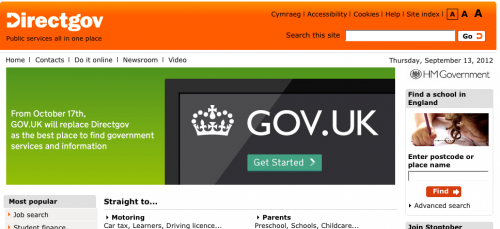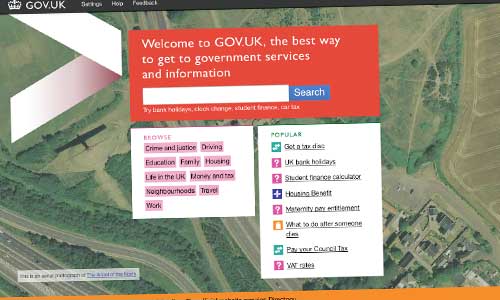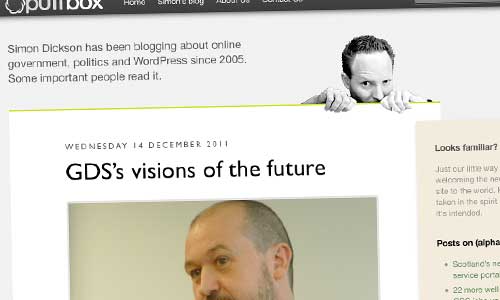Confirmation on the Cabinet Office’s blog of something that’s been known within the Whitehall webby world for a little while now: Tom Loosemore (ex BBC, Channel 4, Ofcom, Show Us A Better Way, etc etc) has been ‘asked’ to put together an ‘alpha’ version of what a Single Government Domain website, as proposed by Martha Lane Fox, might look like.
My feeling was that, although Martha’s principle was sound, I feared for its execution. With the ‘right people’ involved, it could be made to happen; with the usual people involved, however, it would almost certainly go the same way as previous attempts.
Tom Watson MP took a very similar view of things. Writing at Labour Uncut last November, he said:
As Martha rightly points out, to achieve the changes required to make engaging with HMG online a simple, pleasurable experience requires a massive change in culture and technical expertise. And Francis [Maude] is also humble enough to know that he’s going to need the flair and talent of Britain’s best web people. He needs the A-team.
… and indeed, one of the names Tom (W) went on to list was Tom Loosemore. It was a suggestion I entirely agreed with: indeed, I’d mentioned Tom as an ideal candidate for the CEO Digital position (although he himself didn’t agree!).
Tom and his team – which also includes FCO’s Jimmy Leach as the designated Editorial Lead, and has called on various ‘usual suspects’ from the gov/web field (including yours truly, briefly thus far) – have been working out of a deserted floor of COI’s Hercules House offices for a couple of months now, starting with a thorough analysis of traffic and search data from various sources, to identify exactly what the public wants from its government.
Subsequently, there’s been quite a lot of activity over at ScraperWiki, showing a combination of political material, consultations and general public information. There’s an alphagov account at Github. And intriguingly, there have been a couple of FOI requests made via What Do They Know, in Tom’s name, to get JobCentrePlus-related information out of DWP.
Some early visuals – rather bold, post web-2.0 you might call them – have been shown to senior Whitehall webbies, but it’s far too early to offer a judgement on them. The Cabinet Office blog includes a pledge that the team ‘will be making public their progress as they go’, and ‘will report when the first iterations are public’: which, I believe, should be in a matter of weeks rather than months. Meanwhile, you’ll probably want to start following @alphagov on Twitter:
[blackbirdpie url=”https://twitter.com/#!/alphagov/status/52762689625268225″]
Whether or not you like the thought of this initiative, or its hush-hush approach (thus far), there’s no escaping the fact that Francis Maude had given his provisional approval to the notion of unification; and to get us all to a definitive ‘yes’ or ‘no’, we need exercises like this to test out what it will/would actually mean. And you’d struggle to put together a team with better experience, skills and insight to do so.
PS Don’t forget, Francis Maude and Ian Watmore are in front of the Public Administration Select Committee tomorrow morning (Wednesday). I suspect this may come up. Follow the action live at parliamentlive.tv from 09:45.
PPS I couldn’t resist a cryptic tweet this morning: ‘Tempted to register betagov.co.uk – it’s still available, and might come in, you know, handy.’ Amusing to note that it’s since been claimed by Richard Pope (aka memespring).


